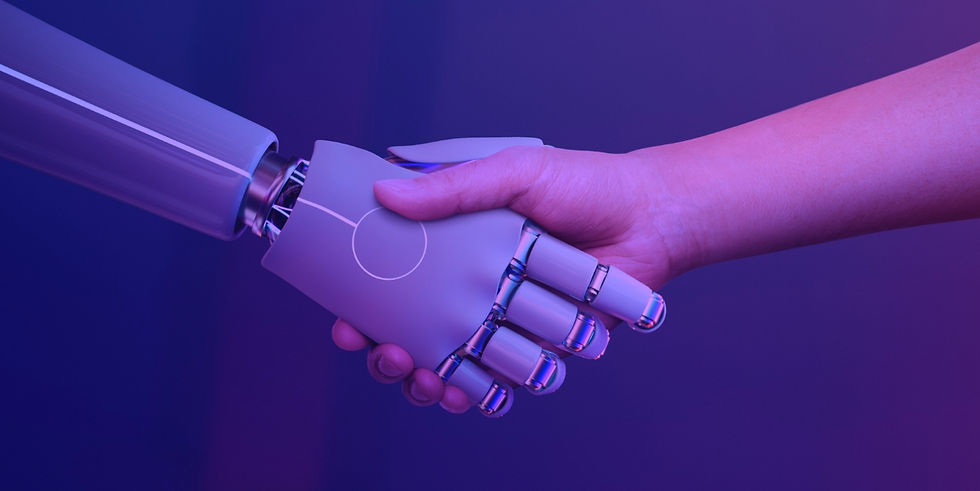Is it really the end of manual talent sourcing?
- Vaishnavee Gonnade
- Mar 21, 2023
- 3 min read
Updated: Dec 27, 2023

Attention, recruiters and talent sourcers! The robots are coming for your jobs - or so they say. With advances in artificial intelligence and automation, it seems like manual talent sourcing may be on its way out.
There’s been a lot of buzz around AI talent sourcing and talent sourcing automation lately. The promise of an AI-powered system that can do the job of a talent sourcer is certainly tantalizing, but is it really the end of manual talent sourcing?
We are here to tell you that, no, it’s not.
1. The promise of AI talent sourcing
Don’t get us wrong, AI talent sourcing definitely has its benefits. It can quickly scan through thousands of resumes and identify candidates that meet certain criteria. It can even use machine learning algorithms to make connections between seemingly unrelated data points, allowing it to identify candidates that might have been overlooked by talent sourcers.
2. The role of human intuition in talent sourcing
But here’s the thing: AI can only do what it’s programmed to do. It can help with segregating the resumes based on what’s written on them.
It can’t read between the lines of a resume or cover letter to identify potential red flags or hidden talents. That’s where talent sourcers come in. It’s ultimately up to a human to make the final decision on whether to move forward with a particular candidate.
3. The value of personalized outreach in talent sourcing
When it comes to reaching out to potential candidates, a personalized message can go a long way. An AI system might be able to send out hundreds of messages in a matter of minutes, but those messages are likely to be generic and lack any real personalization. A talent sourcer, on the other hand, can take the time to craft a message that speaks to a candidate’s specific skills and experience, increasing the likelihood of a response.
4. The importance of candidate engagement

But personalized outreach is just the beginning. Once a candidate has been identified and engaged, it’s up to the recruiter to build a relationship with them and get a sense of their potential fit within a particular company culture. AI simply can’t do that. It can’t pick up on the nuances of a conversation or make intuitive leaps based on a candidate’s body language or tone of voice.
5. The Boolean search in talent sourcing
Additionally, AI can only do what it’s programmed to do and may miss out on exceptional candidates who do not fit the standard mould. AI systems can suffer from bias and discrimination, as they can be trained on data that reflects historical biases.
6. AI system output solely based on human inputs
AI systems are straightforward. You put a certain input such as a Java Developer with a minimum 5 years of experience, the output dataset may include 1000s of resumes including a senior manager with 12 years of experience, a java developer who might have changed the role/technology, or a java developer with 10 years in the field. These are not the actual requirements for the post.
In 1000 resumes, you may just find 4 or 5 suitable candidates. And, even if these don’t work out, you are back to square one.
Only a human talent sourcer can screen and qualify a resume without the hassles of time and cost wastage.
7. The future of talent sourcing: a human-AI partnership

So, what’s the solution? In my opinion, the best approach is to use AI and manual sourcing together. AI can certainly help to speed up the initial screening process, but it’s up to talent sourcers to do the heavy lifting when it comes to personalized outreach, candidate engagement, and the more nuanced aspects of talent sourcing.
In the end, it’s not really about manual talent sourcing vs. AI talent sourcing. It’s about recognizing the strengths and limitations of each approach and using them together in a way that maximizes their combined effectiveness. AI is certainly an exciting development in the world of talent sourcing, but it’s not the end of the road for talent sourcers. After all, sometimes it takes a human touch to find the perfect candidate for that specific role.



